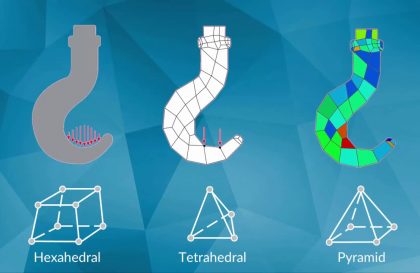The ongoing COVID-19 pandemic has shifted attention to the airborne (also commonly referred to as ‘aerosols’) transmission of exhaled droplet nuclei within indoor environments. Therefore, a number of studies used different methods to predict the possibility of transmission of COVID-19 with various conditions. One study from Oklahoma State University Researcher Yu Feng investigated transport dynamics of COVID-19 droplets through the air.

It has been also known that a cough can turn human mouths into atomizers and droplet size can vary depending on volumetric flow rate. These droplets consist of saliva and mucus with the range in diameters from 2 to 2000 micrometers.

According to authorities 1.83-m (6-feet) social distancing is advised to reduce the spread of the disease among humans. This is based on the assumption that no air circulation exists around people. However, it is not well investigated whether the ambient wind and relative humidity (RH) will cause SARS-CoV-2 laden droplets to transport farther in the air, and make the current social distancing policy insufficient.
Wind Effect and Humidity (RH)

Wearing Face Masks

Important Findings
Yu Feng said that 1.83 m (6 feet) is not able to sufficiently protect the healthy virtual human from being in contact with the cough droplets when the wind velocity is not zero, it is beneficial to investigate whether a longer social distance will be a better standard to be used for the social distancing policy
With mask, although there are still cough droplets that cannot be captured by the mask, the total number of the cough droplets transport in the air is significantly lower than the case without the mask.
It can be concluded that wearing facial masks can significantly reduce the airborne transmission of cough droplets, even if it is without proper seal with the face. It is recommended that people should wear facial coverings with minimized gaps with their faces, in order to maximize their effectiveness.
Reference
1-https://reader.elsevier.com/reader/sd/pii/S0021850220300744?token=C307DB10EAE5FE58E566F6940ACA9E7D6A02D6C7D0998ADAE0012DC4591F3A0458C51FAAC9ECC1B76BB2C0BE185B513A








